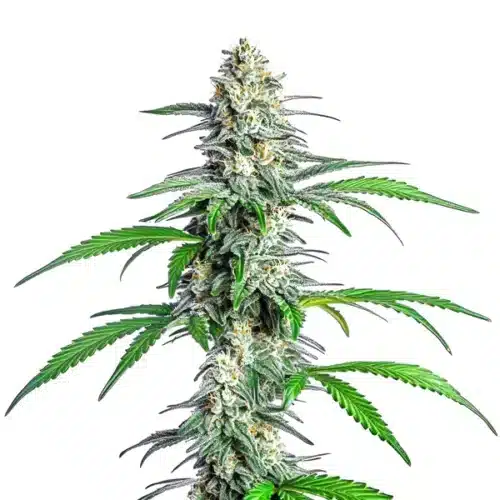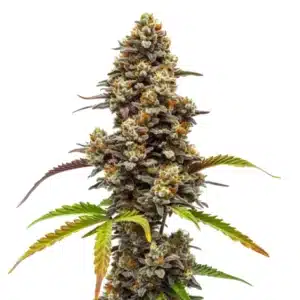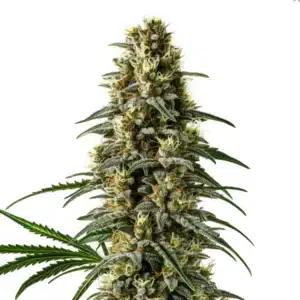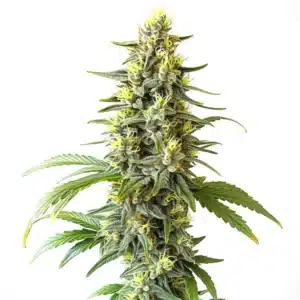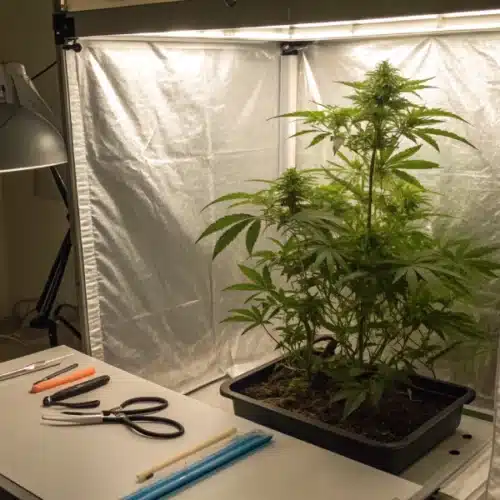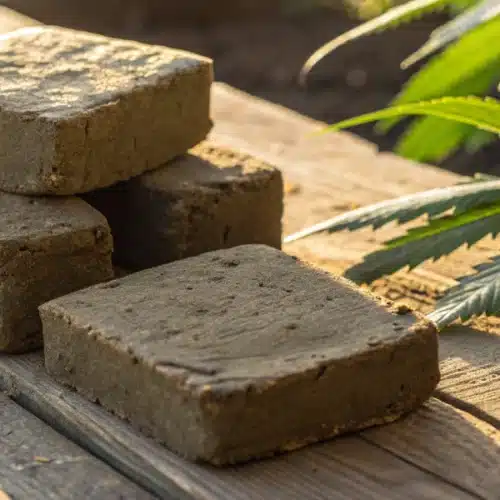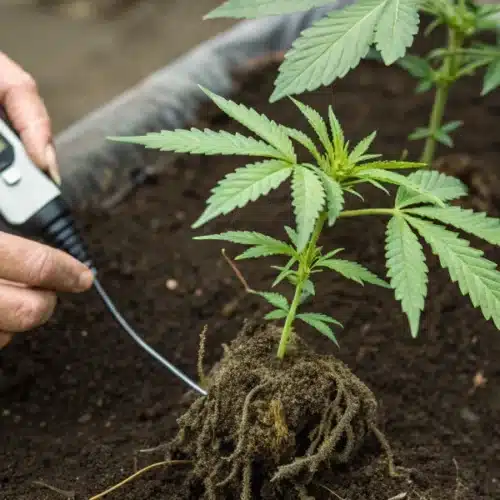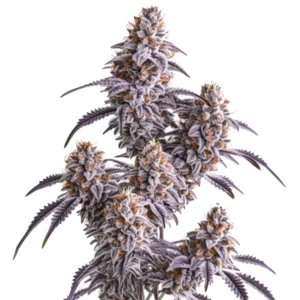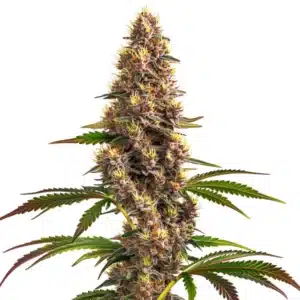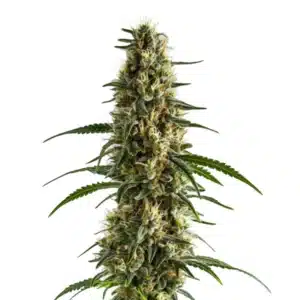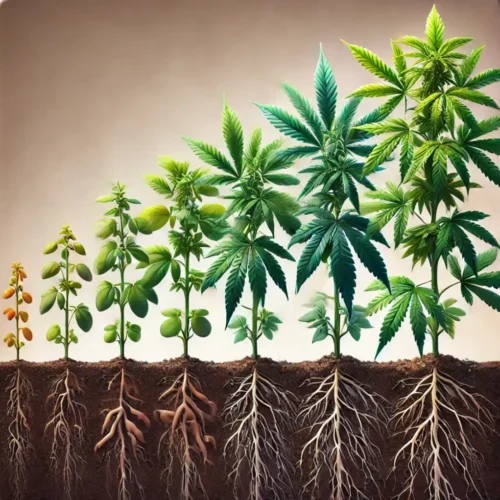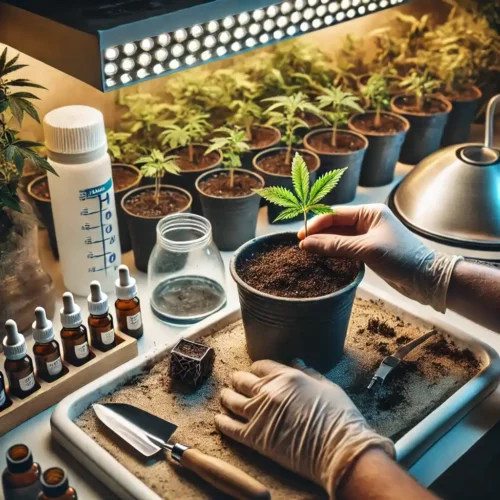Many breeders may ask why should I transplant my plants? Or what is the use of transplanting plants? In this guide, we are going to tell you the advantages and the reasons why you should transplant your plants. We are also going to teach you when and how to transplant your plants.
Recommended Strains
Bubblegum Cookies
 THC: 17% - 22%
THC: 17% - 22% Type of seed: Feminized
Type of seed: Feminized Phenotype: Mostly Hybrid
Phenotype: Mostly Hybrid Day to flower: 8 - 10 weeks
Day to flower: 8 - 10 weeks
Lyly Sour x Blue OG
 THC: 15 - 17%
THC: 15 - 17% Type of seed: Feminized
Type of seed: Feminized Phenotype: Mostly Sativa
Phenotype: Mostly Sativa Day to flower: 8 - 10 weeks
Day to flower: 8 - 10 weeks
Transplantation is a process in which a plant is moved from a small pot to a larger one or directly to mother earth. This process is done because the plants need their roots to grow well, so it is best to do transplants because if you put your cannabis plants in the definitive pot all at once until the harvest, your crop will not be able to develop optimally and can lead to dissapointing harvests.
In order for the roots to have enough room to expand as the plant grows, it is necessary to transplant the plants. When the roots of the plants do not have enough space in their containers, it can cause various problems to the roots and affect the integral development of the plant.
One of the problems that can arise is that the roots become entangled with each other. This affects their ability to correctly receive the nutrients and water that are provided to them as well as oxygen. Consequently, many plants tend to weaken and even die as the roots practically suffocate. For this reason, it becomes necessary to do transplants and also to know how and when is the time and the correct way to perform the transplant.
Transplant time
Many gardeners wonder, “When I can transplant?” That is why we are now going to give you a few tips to help you know when to carry out this process.
1- One of the first symptoms that tells us that it is time to transplant is when the roots of the plants begin to emerge from the bottom of their small containers. This phenomenon usually occurs when you grow your plants from the beginning in 500cc glasses or in 1L or 2L bottles.
2- Another sign that it is necessary to transplant is shown when the size of the pairs of leaves exceeds the edge of the pot or container where the plant is grown.
3- Many times, the roots do not come out from the inside of the pot or container, but they begin to squeeze the pot on its side walls, leaving it in a rigid state. This is an important signal that you should transplant urgently.
4- Also, it usually happens that the plants look decayed and despite the fact that you water them, they fail to rebound because they do not receive the nutrients, oxygen, and water they need to live. The above means that your plant requires an immediate transplant.
5- If you started growing in a container or small pot, you can carry out at least 2 transplants until the plant begins to flower. For example, if you start the crop in a 500cc pot (glass) and then transplant it to a 7L pot, later, transplant it again in a 10L, 15L, or 20L pot. If you want to transplant directly to mother earth, we recommend you carry out 1 more transplant to a larger pot with which you will enhance the size of the plant and avoid the risk that a small-medium sized plant will not prosper in a crop on mother earth.
Promos & Deals
Other symptoms indicating that it is necessary to transplant
– A wilting of the leaves of the plants and observed brown coloring that changes the color of the plant and also dries out the leaves completely.
-The substrate tends to dry faster than normal, so the plant does not receive all the necessary nutrition.
– Plants tend to spike and optimal growth becomes much slower.
– In many cases, nutrients tend to burn the plant.
– This may be an obvious point, but you will know it is time when the plants look much bigger than the pot.
– It may be that the stems turn red and also that the plant shows other types of deficiency.
Before starting with the transplant, you must have the pots to which you are going to move the plants very close as well as other supplies such as the substrate, the mycorrhizae, and the water with its separated nutrients.
Transplanting step by step

1- Take your plant carefully and hit the bottom of the container or pots. If you use 500cc plastic cups, you can squeeze the bottom part and extract the plant with substrate and everything. If, you use 1L or larger water bottles, you will have to carefully cut the plastic so as not to damage the roots and kill the plant. On the contrary, if you use fabric pots, you can gently tap the bottom of the pot and extract the plant with all of its substrate.
2- Try to have the pot where you are going to move your plants filled with substrate in advance. Remember that the substrate must be rich in nutrients and aerated so that the roots can continue to grow and allow the plant to progress.
3- In the substrate of the new pot, create a hole in which the plant will fit and remember to leave a good base of substrate at the bottom so that the roots can continue to grow and explore. An important fact is that you can apply mycorrhizae in the area of the substrate where you are going to put the plant so that the roots are stimulated and grow as these fungi are going to enhance them in a good way.
4- The roots are fundamental in this process, therefore, try not to touch them or damage them so that the plant is not affected or it can die.
5- When you already have the plant in the new substrate and in the new pot, you can proceed to cover it and completely cover the roots. Here, it is also possible to gently look at the plant using a product that reduces its stress and that you can buy at any marijuana grow store.
6- Many gardeners separate the plants from light for at least 24 hours, thus preventing the transplanted specimens from suffering from some type of light stress.
Another transplant method
If this way of transplanting seems a bit complicated to you, then we will teach you an easier way, but one that requires a lot of care and concern. Take the largest pot you are going to use and fill it up halfway with the substrate you use. Next, take the next smallest pot and fill around it with substrate, including its interior.
Continue the transplant process with the next pot, following the same process until you reach the end. As the plant grows and the roots expand, filling the container or pot, proceed to remove the plant from its current pot and transplant the plant to the hole left in the substrate where it fits perfectly. This is another type of transplant that can be applied when growing marijuana or other types of plants.
Watering the plant
You can water your plants after transplanting with a stimulant that helps lower stress levels or directly with nutrients which must be dissolved in water and with a PH between 6.2-6.5. This watering should be done gently until you see water coming out of the bottom of the pot. This whole process is going to generate stress for your plants as we have mentioned. For this reason, try not to turn on the fans so that the air that hits them does not generate extra stress.
The best easy cannabis plant to transplant
The most experienced marijuana growers know that it is not the same transplanting a pure sativa variety compared to a hybrid or Indica genetics because each of them present different levels of difficulty when it comes to transplanting. As you can imagine, most sativa genetics tend to produce more branches and slightly thinner structures, therefore, they may be a little more complex to transplant. This is even more likely if they are grown outdoors where they generally grow to very large sizes. More indica cannabis varieties are more compact with a short internode, meaning they do not produce much branching and therefore can be easier to transplant.
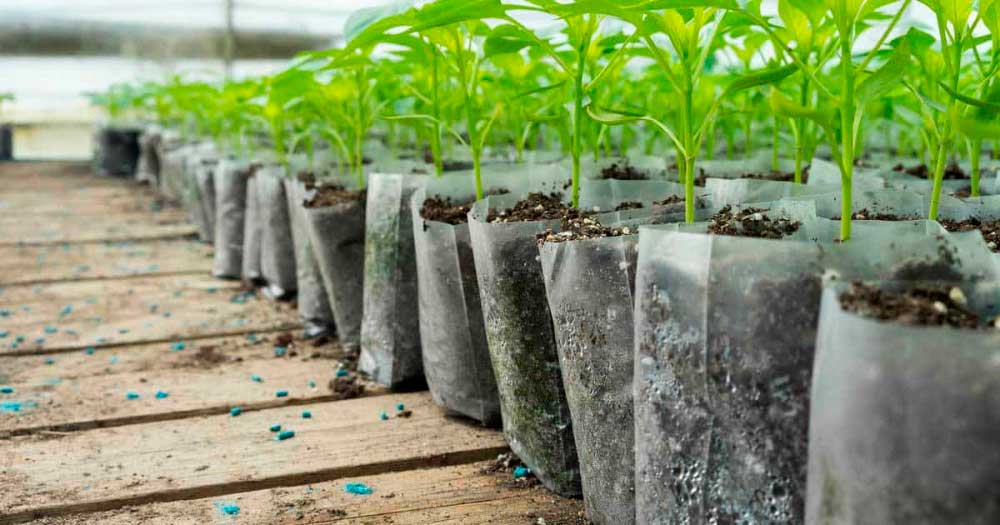
Lyly Sour x Blue OG
Lyly Sour x Blue OG has mostly indica genetics with powerful THC levels between 15%-17% that generate social effects that are very relaxed and help to raise your spirits, filling your day with happiness. For this reason, this variety is recommended for people suffering from arthritis and also for those who need to fall asleep and suffer from insomnia as well as patients who need to control chronic pain. The balance in the effect is perfect because it allows you to perform daily tasks without any problems in complete freedom and without feeling tired or trapped.
In addition, we tell you that this strain contains terpenes such as cedrene, limonene, terpineol, linalool, and trans-nerolidol which give it a berry flavor with strong notes of diesel and earthy aftertastes that are full of sweetness. On the other hand, despite its short flowering time of 8-10 weeks, this strain delivers great yields, ranging from 1.31-1.64 oz/ft2 indoors. If you grow outdoors, you should prepare for some heavy yields as you reap between 28-35 oz/plant with dense buds loaded with resin that are ideal for extractions.
Bubblegum Cookies
Bubblegum Cookies is a cross between Girl Scout Cookies x Pink Bubblegum that gave rise to mostly hybrid genetics. It has fresh fruit flavors like strawberry, nuts, and exquisite sweetness. To the above, they add the feeling of euphoria, joy, and an absolute stimulation of the appetite. The buds are dense and fluffy and help people who suffer from muscle pain or who suffer from depression or insomnia.
Bubblegum Cookies plants are medium in height and pine shaped, a classic trait of mostly hybrids. This variety produces yields of 1.15-1.47g/ft2 indoors and outdoors, yields get heavier at 15-21oz/plant. A characteristic of this strain is that the buds are extremely dense but fluffy, dark green in color, and some phenotypes present purple-type specimens, shaped like popcorn between long amber pistils and light purple trichomes. Added to this is the potency of Bubblegum Cookies buds which is between 17%-22% THC. That is covered by a great resin with a strong and sweet smell.
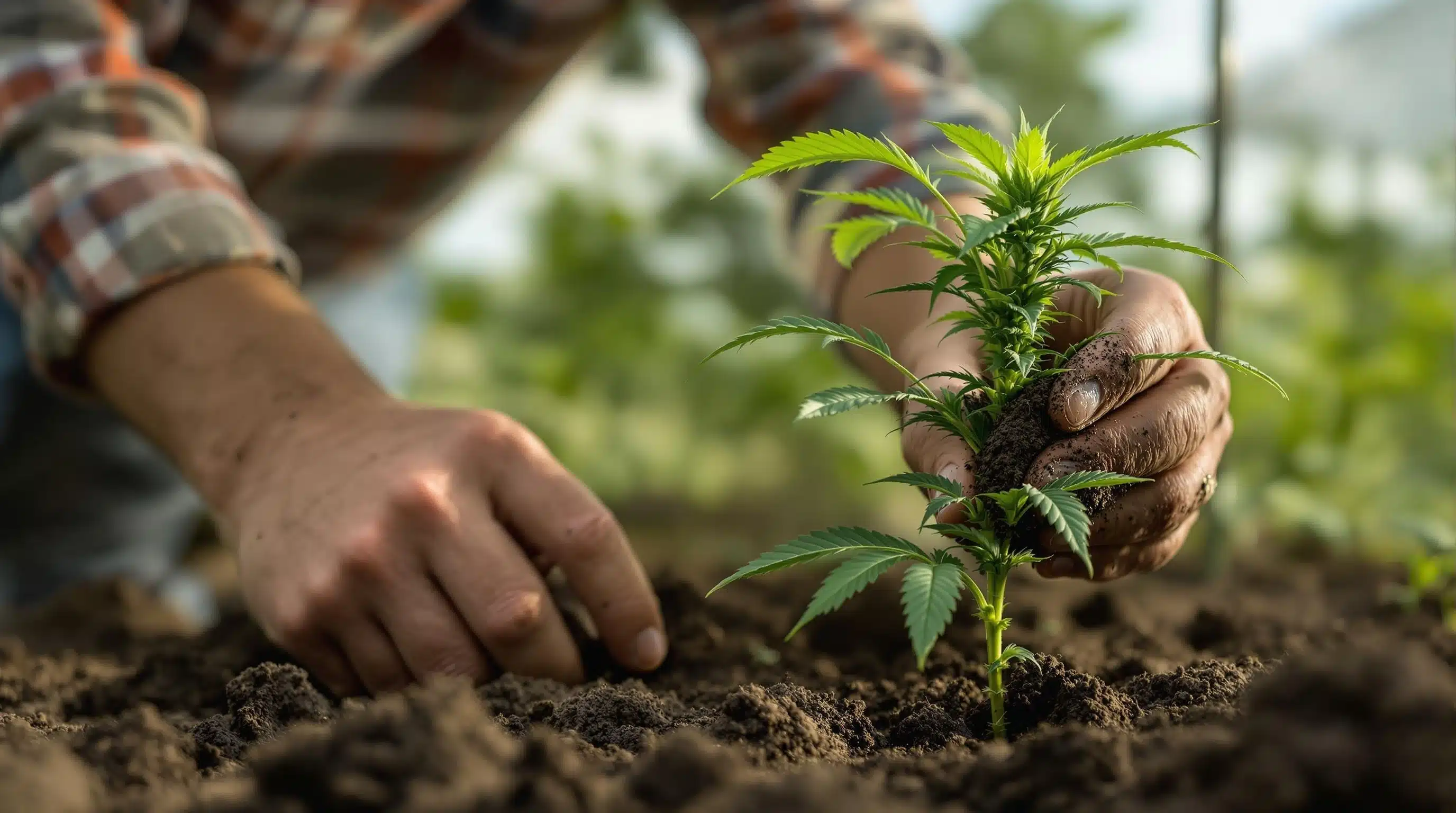
Lemon Garlic OG
Lemon Garlic OG is a dominant indica variety obtained by crossing True OG x Unknown Strain which generates a variety of weed that is recommended to be smoked in the afternoon so that its slightly sedative effect induces deep relaxation and restful sleep. Likewise, the flowers of this strain of marijuana offer a THC content of 17-20% and it is a good strain for sharing with friends in the lake or river on a completely free day.
Indoors, Lemon Garlic OG cannabis plants produce yields of around 1.37-1.97/ft2 after flowering for 10-11 weeks. On the other hand, outdoors, you can get up to 35 oz/plant in optimal conditions which is a very heavy harvest. For medicinal use, this variety of cannabis can help people with the control of spasms, chronic muscle pain, and also fatigue because it is dominated by terpenes such as cedrene, terpineol, and pinene that provide the taste of Lemon Garlic OG which is a mix of citrus notes with a pine aftertaste. Now, if you want to obtain the best harvests, what we recommend is to grow it indoors in SOG format or outdoors, pruning and stretching the lateral arms as well as nurturing these plants organically because this way, they can achieve the highest yields.

